While we continue to buy plastic bags in a bit of shame, some are already making the eco-friendly products of the future.
Let’s read the Knife article about how inventors from all over the world have turned familiar goods into samples of total environmental friendliness. Their production not only does not harm nature, but even helps to clean it.
- Headphones from mycelium
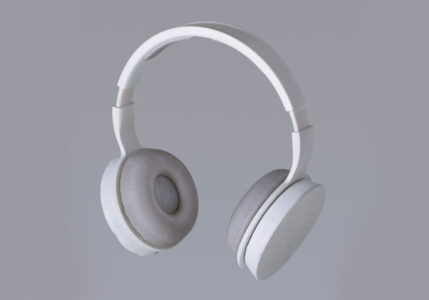
Finnish design agency Aivan has created the world’s first headset from renewable raw materials. Korvaa headphones are made with mycelium, lactic acid, cellulose and hydrophobin, a protein that repels water in the cell.
Synbio technology is now actively developing, with the help of which new organisms can be created and existing biosystems can be redesigned: they can produce the necessary chemicals, materials, drugs or fuels. This technology will play an important role in the transition from a fossil fuel economy to a circular bioeconomy. (Which includes renewable energy sources, recycling, careful use of natural resources).
***
You may read here about the features of the fourth industrial revolution: internet of things, circular economy, and blockchain.
***
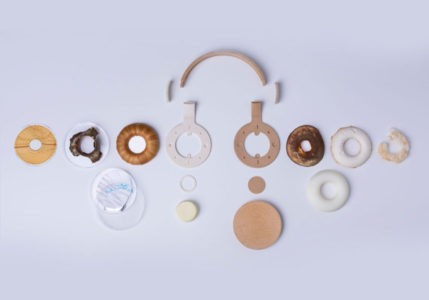
The Korvaa headset was the first physical implementation of Synbio. Headphones require materials with a wide variety of properties: solid, foamy, pliable, mesh fabric – all this scientists have grown, demonstrating the capabilities of the new technology.
- “Skin” from the mycelium
The mycelium is also used for the production of clothing. Bolt Threads invented Mylo ™, an analogue of synthetic and natural leather, consisting of mycelium.

Mycelium is a branched underground structure of fungi. It looks like tiny strands forming vast networks underground.
The material itself is elastic, durable and biodegradable. To produce it, you don’t need to raise livestock and worry about greenhouse gas emissions. And it only takes a few days to make Mylo.
- Rocking chairs and screens made of ripstop nylon

Design agencies Layer and Raeburn created furniture at the intersection of industrial design and fashion, using unnecessary parachutes and steel frames. The collection includes four types of rocking chairs and two screens.

- Recycled nylon backpack
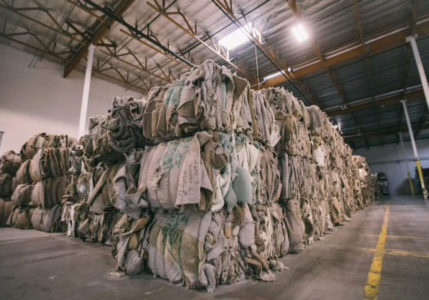
The Prada brand launched the Re-Nylon project: it re-releases its iconic bags, but from reclaimed nylon. By the end of 2021, all of the company’s nylon garments will be made from recycled material.
The raw material for re-nylon can be different materials. For example, textile yarn manufacturer Aquafil makes it from reclaimed plastic and textile waste, as well as fishing nets. This nylon can be recycled indefinitely without loss of quality.
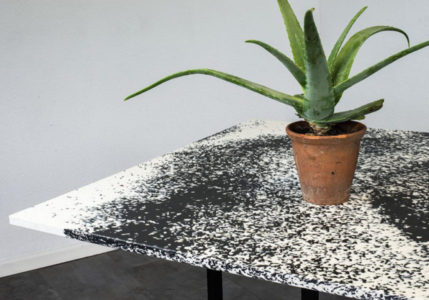
Together with National Geographic, the brand has released short videos What We Carry about traveling around the world, revealing the inner workings of the company. Filmed in Arizona, the video shows a factory that makes reclaimed nylon from carpets. The plant can recycle 1% of carpets that are thrown into landfills in the United States each year (16 thousand tons out of 1.6 million tons).
- Decorative panels made of recycled plastic
British studio Smile creates panels and furnishings from recycled materials, such as plastic bottles, yogurt cups, plant pots, and coffee grounds. All this can be used to make showcases, cabinets, signboards, partitions, countertops, armchairs, as well as cutting boards or food stands.
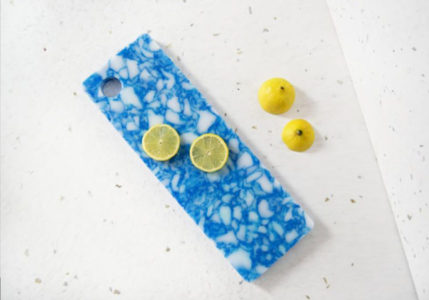
- Marble from plastic packaging

Designer Yenis Akiev from Kazakhstan has developed a method for transforming disposable packaging into marble-like tiles. To do this, the plastic plates are exposed to heat and pressure in the same way as it happens in nature for rocks. Colors are created by sorting waste.

To create plastic marble, the designer was inspired by a new stone of the Anthropocene era – plastiglomerate. It was first found in Hawaii in 2013 after a volcanic eruption fused plastic waste with natural materials – rocks, sand and lava fragments.
- 3D tiles made from sawdust, grape pomace and coffee grounds

California-based studio Emerging Objects specializes in experimental 3D printing. There they designed and built a house with an area of 11 sq. m from 3D tiles. It is sealed, durable and ideal for the temperate climate of the state.
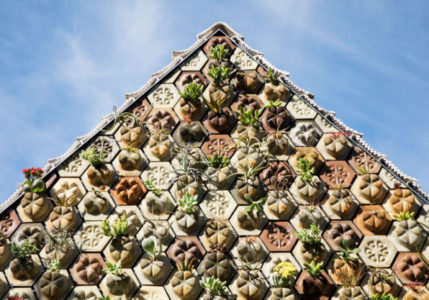
For the front façade, the studio used Planter Tile, a recessed tile system into which live plants such as succulents can be planted. Hexagonal tiles are made from cement, sawdust, recycled grape pomace and coffee grounds.
- Decorations made from coffee leftovers
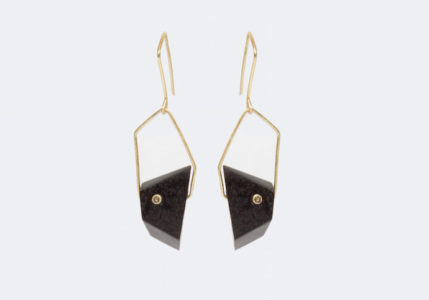
London-based designer Rosalie Macmillan has created the Java Ore jewelry collection in silver, gold and recycled coffee grounds. Coffee leftovers have turned into a durable material that can last a very long time.
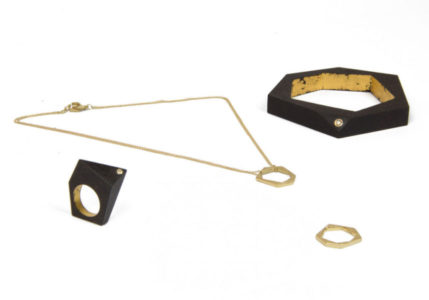
- Gum sneakers

1,500 tons of chewing gum are thrown out on the streets of the Netherlands every year. It needs to be removed all the time, it takes a large amount of the state budget and the time of city workers.
Designers from Amsterdam-based XPLCT Studios and London-based Gumdrop have created the world’s first running shoe with recycled gum soles. Now it will not work to buy them – they are completely sold out, but the manufacturers promise to release a new batch this year.
- Vegan apple peel bags

French brand Ashoka Paris has collaborated with Pamela Anderson on a collection of ethical bags and accessories made from innovative non-animal materials. The outer is made from vegan leather based on apple peel, and the lining is made from recycled plastic bottles. It takes 2-3 PET bottles to make one bag.
- Bamboo bags
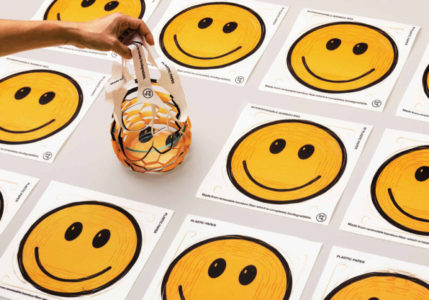
As of March 1, 2020, New York State has banned stores from dispensing plastic bags to customers. According to statistics, residents of the state use 23 billion disposable bags a year, which causes enormous harm to the environment. Brooklyn designers have created an alternative to plastic bags – bamboo fiber string bags.
On a trip to Taiwan, Placeholder studio founder Sho Shibuya saw people carrying their lunch boxes in mesh bags.
A flat sheet of plastic would turn into a bag as soon as it was pulled by two handles.
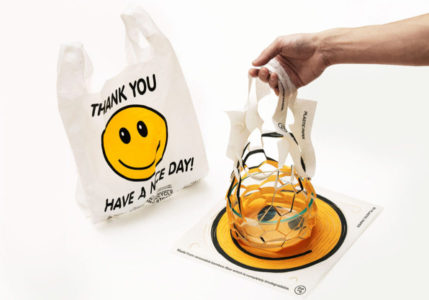
Back in Brooklyn, the designer designed similar bags, but made from biodegradable bamboo. A set of 10 is currently selling for $ 20, but Placeholder wants to scale production and bring the price down to 25 cents per pack.
- Lunch boxes made from compostable ingredients
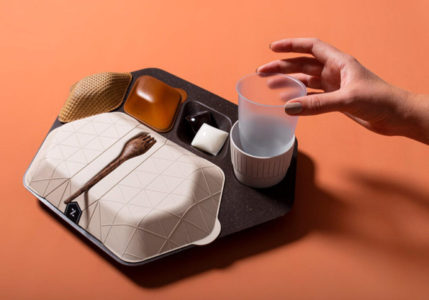
Industrial design studio PriestmanGoode found that on every long-haul flight, there is an average of half a kilogram of garbage per person per person. That’s about 5.7 million tonnes each year – from headphones and eye masks to toiletries and food waste.
To reduce the amount of plastic waste generated in flight, the company has come up with compostable lunch boxes.
The lid for the main dish is made of bamboo, the tray is made of pressed coffee grounds and rice husks, the rest of the containers are made of wheat bran, the spoon is made of coconut tree.
The cup is made from rice husk mixed with polylactic acid, and the cup holder is made from seaweed. Instead of small plastic containers for sauces and milk, they are handed out capsules made from soluble seaweed, like the ones given to marathon runners, on board.

It is envisaged that the tray and tray will be washed and reused, and the disposable plastic that is usually thrown away will be replaced with an eco-friendly alternative.
- Braided Woven Conditioner
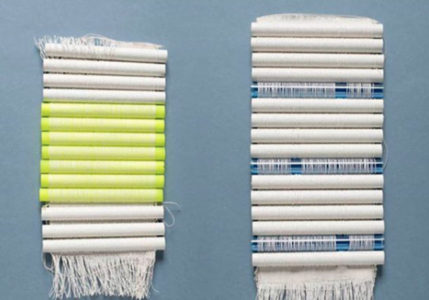
The woven air conditioner is a wall covering and does not require electricity. Tubes with a saline heating pad are hidden behind the fabric – it changes temperature when the substance in it passes from a liquid to a solid-state. The substance inside them is capable of releasing and absorbing heat/cold, lowering or raising the temperature in the room.
For example, in hot weather, the solid inside the tubes absorbs heat and becomes liquid, cooling the air.
Three modules are capable of cooling a medium-sized bedroom.
***
The theme of sustainability is among the top of designers’ talks. Many people would like to switch to organic fabrics. What eco-friendly tissues are there? Read a material guide about eco-friendly fabric here.



